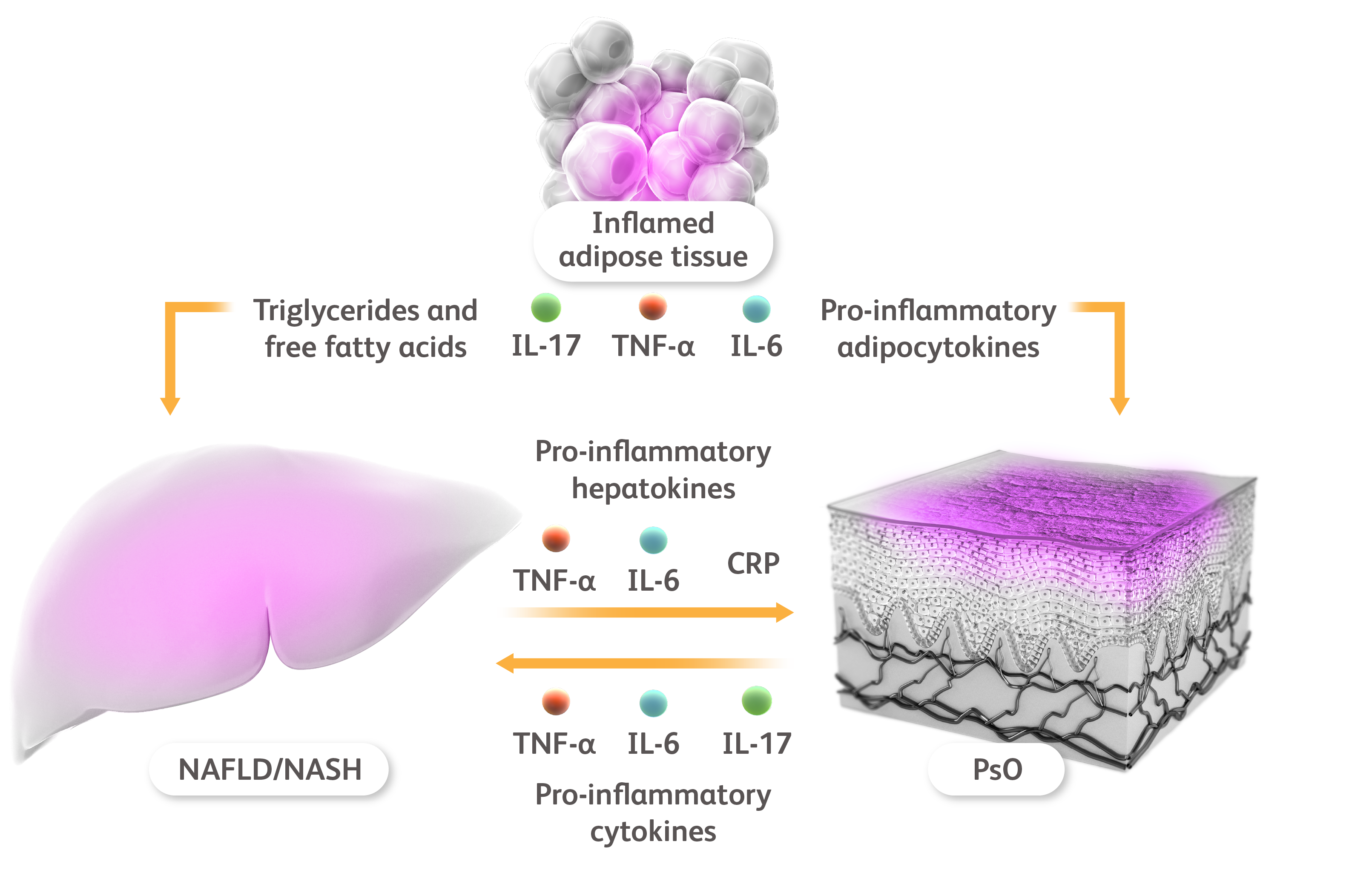more than a skin disease
References
- Tula E et al. Australas J Dermatol. 2017;58:194–199.
- Mantovani A et al. Int J Mol Sci. 2016;17:217.
- Anstee QM et al. Nat Rev Gastroenterol Hepatol. 2013;10:330–344.
- Elmets CA et al. J Am Acad Dermatol. 2019;80:1073–1113.
- Wenk KS et al. J Eur Acad Dermatol Venereol. 2011;25:383–391.
- Farrell GC et al. J Gastroenterol Hepatol. 2007;22:775–777.
- Angelico F et al. J Gastroenterol Hepatol. 2003;18:588–594.
- Carrascosa JM et al. Actas Dermosifiliogr. 2017;108:506–514.
- Yatsuji S et al. J Gastroenterol Hepatol. 2009;24:248–254.
- Busca Arenzana C et al. Cells. 2021;10:1099.
- Ganzetti G et al. World J Cardiol. 2016;8:120–131.
- Perez-Chada LM, Merola JF. Clin Immunol. 2020;214:108397.
- Ogdie A. J Invest Dermatol. 2018;138:760–767.
- Candia R et al. J Eur Acad Dermatol Venereol. 2015;29:656–662.
- Heitmann J et al. J Dtsch Dermatol Ges. 2021;19:517–528.
- Afonina IS et al. Cell Mol Life Sci. 2021;78:2709–2727.
- Giles DA et al. Curr Drug Targets. 2015;16:1315–1323.




